Race for Water uses two energy sources: sun and wind. The yacht’s on-board wind power isn’t from a traditional turbine—it’s a steerable kite sail that tows Race for Water as it flies. These two technologies were selected for maximum power and intelligent automation.
This is Race for Water’s challenge: using a seamless mix of renewable energy sources—sun and wind—to show that the transition to clean energy is possible. This involves learning how to manage multiple energy sources at once, using only the energy produced on board the yacht, and, most importantly, continuing to innovate. On board Race for Water, wind energy comes from a steerable kite sail manufactured by Skysails Yacht. The kite is attached to Race for Water by a cable, and it flies 150 meters above the boat. Amazingly, it provides all the power needed to tow the 100-ton yacht through the water. How is this kite different from a traditional sail? The kite’s major innovation is that it operates completely independently from the rest of the yacht.
FIGURE-EIGHTS IN THE SKY
It flies in a figure-eight pattern that is completely independent from the yacht’s motion, which allows the kite to fly much faster than Race for Water travels. In fact, this figure allows the kite to increase its speed, by creating apparent wind, wind that it produces by moving. This gives the kite incredible traction power. Using a control pod—a smart box located under the kite’s surface—the kite sail flies in a figure-eight motion. This allows the kite to increase its speed by creating a higher relative wind speed—it creates its own wind as it moves through the air. Each figure-eight motion generates up to two metric tons of force on the cable.
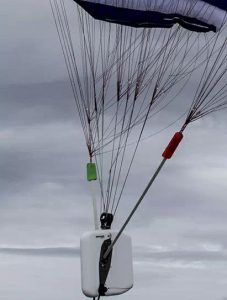
The control pod
Without this motion, the kite would simply fly like a flag above the ship. Race for Water’s crew has shown that a 40 m2 kite and a 10-knot tailwind are enough to tow the boat with no additional power. They have five kites on board, ranging from 10 to 40 m2; these can tow Race for Water in winds coming from any direction in the 180 degrees behind the boat.
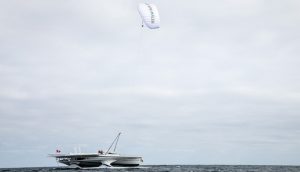
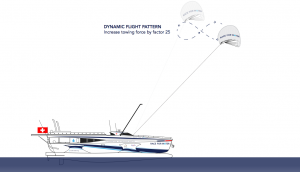
From reality to schematization
INDEPENDENCE AND INTELLIGENCE
The control pod located below the kite’s surface is a smart device: it allows the crew to securely manage the kite’s flight. If the wind’s strength or direction changes, the size of the kite’s figure-eight path and window of movement are automatically adjusted according to real-time wind condition measurements.
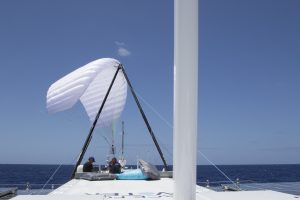
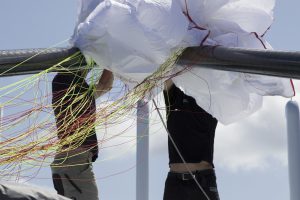
Setting up the kite
A variety of sensors take wind measurements for the kite and the yacht. Those measurements are then sent to a computer for analysis, and the computer communicates with the pod via wi-fi, specifying the size of the figure-eight pattern and its position relative to the boat. Kite developer Edouard Kessi explains, “The only adjustment the crew has to make is the kite’s altitude. And an alarm tells them when to do that.” For example, in very strong winds, the crew positions the kite almost vertical to the yacht, and the figure-eight motions stop. Kessi jokes, “The hardest thing about a flying machine is that it’s constantly trying to crash.” But with the kite sail’s smart, autonomous control pod, it’s completely safe to fly.
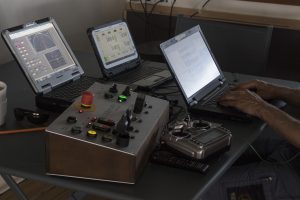
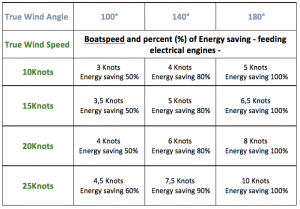
From computer to data projection (table @Martin , Race for Water engineer)
The crew is now learning about the performance that they can expect from the kite’s technology. Crewmember and engineer Martin Gavériaux explains, “For a month now, we’ve been testing the different kites in different wind conditions. During the Lorient – Bermuda navigation, the kite flew 25% of the time (during the days). Then we analyze the data to see how much energy we saved and how much speed we gained with the each kite. This helps us plan for more energy-independence and faster sailing, depending on the conditions.” These are promising results, and all signs point to Race for Water being able to reach speeds of 10 knots in a 25-knot tailwind, without using the electric motors.